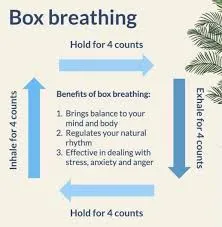
How to Manage Anxiety Through Breathing Exercises
Anxiety is a common condition that affects millions of people worldwide. Whether it’s caused by stress, a specific fear, or simply the overwhelming nature of life’s responsibilities, anxiety can significantly impact our well-being. While there are many treatments available, including therapy and medication, one of the simplest and most effective tools to manage anxiety is breathing exercises. Breathing techniques can help calm the mind, reduce stress, and promote relaxation, making them a valuable skill for anyone experiencing anxiety.
The Connection Between Breathing and Anxiety
To understand why breathing exercises are so effective in managing anxiety, it’s important to first explore the connection between anxiety and our breath. When we experience anxiety, our body’s fight-or-flight response is activated. This leads to the release of stress hormones such as cortisol, which triggers a series of physiological responses, including faster heart rate and rapid, shallow breathing. This quickened breathing pattern, known as “chest breathing,” can make anxiety worse by increasing the feeling of panic and creating a cycle of stress.
In contrast, when we engage in slow, deep breathing, we activate the parasympathetic nervous system—the body’s “rest and digest” system. This triggers the release of calming neurotransmitters like serotonin, which helps to lower heart rate, stabilize blood pressure, and induce a sense of calm. By practicing controlled breathing, we can counteract the effects of anxiety and return our bodies to a state of relaxation.
Types of Breathing Exercises to Manage Anxiety
There are several types of breathing exercises that can help manage anxiety. Below are some of the most popular and effective methods:
1. Deep Breathing (Diaphragmatic Breathing)
Deep breathing, also known as diaphragmatic or abdominal breathing, is one of the most well-known techniques for managing anxiety. This exercise focuses on engaging the diaphragm, which is located just beneath the lungs, allowing you to take full, deep breaths.
How to Do It:
- Sit or lie down in a comfortable position.
- Place one hand on your chest and the other on your abdomen.
- Inhale slowly through your nose for a count of four, making sure your abdomen rises as you breathe in. Your chest should remain relatively still.
- Hold your breath for a moment.
- Exhale slowly through your mouth for a count of four, allowing your abdomen to fall.
- Repeat for several minutes, focusing on the rise and fall of your abdomen rather than your chest.
This technique helps slow down your breathing, reduce tension, and promote a sense of calm.
2. 4-7-8 Breathing
The 4-7-8 breathing technique is designed to promote relaxation by lengthening the exhale, which activates the body’s relaxation response. This technique can be particularly helpful when you feel your anxiety escalating or when you’re trying to fall asleep.
How to Do It:
- Sit or lie down in a comfortable position and close your eyes.
- Breathe in quietly through your nose for a count of four.
- Hold your breath for a count of seven.
- Exhale completely through your mouth for a count of eight, making a whooshing sound as you do.
- Repeat the cycle for four breaths, gradually increasing the duration as you get more comfortable with the exercise.
The 4-7-8 method encourages you to slow your breath and promotes a feeling of relaxation that can help with anxiety management.
3. Box Breathing (Square Breathing)
Box breathing, also called square breathing, is a simple technique that focuses on equalizing the length of each phase of the breath cycle: inhale, hold, exhale, and hold again. This method helps to calm the mind and increase focus.
How to Do It:
- Sit in a comfortable position and close your eyes.
- Inhale through your nose for a count of four.
- Hold your breath for a count of four.
- Exhale through your mouth for a count of four.
- Hold your breath again for a count of four.
- Repeat for several rounds, gradually increasing the length of each phase if comfortable.
Box breathing is great for reducing stress and anxiety in both the short and long term. It can be used as a quick tool to calm down during anxious moments or as a daily practice to manage overall stress.
4. Alternate Nostril Breathing (Nadi Shodhana)
Alternate nostril breathing, or Nadi Shodhana, is a yoga practice that helps balance the body and mind. It is thought to reduce stress and anxiety by promoting harmony between the left and right sides of the brain.
How to Do It:
- Sit comfortably with your spine straight and shoulders relaxed.
- Close your right nostril with your thumb and inhale deeply through your left nostril.
- Close your left nostril with your ring finger, and release your right nostril.
- Exhale slowly through your right nostril.
- Inhale deeply through your right nostril.
- Close your right nostril with your thumb and release your left nostril.
- Exhale slowly through your left nostril.
- Repeat for several rounds.
This technique encourages mindful breathing and helps shift your focus from anxious thoughts to the physical sensations of your breath.
5. Progressive Relaxation with Breathing
Progressive relaxation is a technique that combines deep breathing with muscle relaxation. By tensing and then relaxing different muscle groups while focusing on your breath, you can reduce physical tension and help calm your anxious mind.
How to Do It:
- Find a quiet space where you can sit or lie down comfortably.
- Take a deep breath in, and as you exhale, begin tensing the muscles in your feet and toes for a count of five.
- Release the tension as you breathe in again and feel the muscles relax.
- Slowly work your way up the body, tensing and relaxing each muscle group: calves, thighs, abdomen, chest, arms, hands, neck, and face.
- Focus on the contrast between tension and relaxation, breathing deeply with each cycle.
This technique not only encourages deep breathing but also helps to release physical tension associated with anxiety.
When and How to Practice Breathing Exercises
Breathing exercises can be practiced anywhere and at any time, but they are particularly useful in the following situations:
- During moments of acute anxiety: When you feel anxious or panicked, taking a few minutes to practice deep breathing or another technique can help calm your body and mind.
- Before stressful events: Use breathing exercises before situations like public speaking, exams, or meetings to reduce anxiety.
- As part of a daily routine: Regular practice of breathing exercises can lower baseline anxiety levels and improve overall well-being.
- Before bed: If you struggle with anxiety that affects your sleep, incorporating a breathing exercise into your bedtime routine can help calm your mind and promote rest.
Additional Tips for Effective Breathing Exercises
- Find a Quiet Space: While breathing exercises can be done anywhere, finding a calm environment can enhance your ability to focus and relax.
- Use Guided Meditations: If you’re new to breathing exercises, guided meditation apps or videos can provide structure and help you stay focused.
- Be Patient: It might take time to feel the full benefits of breathing exercises, so don’t get discouraged if you don’t see immediate results.
- Combine with Other Relaxation Techniques: Breathing exercises work well when combined with other stress-reduction strategies, such as mindfulness, stretching, or journaling.
Conclusion
Breathing exercises are a simple yet powerful tool to help manage anxiety. By slowing down the breath and focusing on deep, controlled inhales and exhales, you can activate the body’s relaxation response, reducing feelings of stress and panic. Whether you practice deep breathing, 4-7-8 breathing, box breathing, alternate nostril breathing, or progressive relaxation, these techniques can help you regain control over your anxiety. With regular practice, breathing exercises can become an effective part of your daily routine, empowering you to face stressful situations with a calmer and clearer mind.


